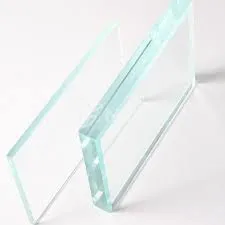Understanding the Cost of Safety Glass per Square Foot
Safety glass is an essential material widely used in various applications, including residential and commercial buildings, vehicles, and protective equipment. As safety regulations become stricter and demands for improved durability increase, understanding the cost of safety glass per square foot is crucial for both consumers and construction professionals.
What is Safety Glass?
Safety glass is designed to provide enhanced security and protection against impacts, shattering, and thermal stress. There are two primary types of safety glass tempered glass and laminated glass. Tempered glass is produced through a process of extreme heating and rapid cooling, making it significantly stronger than regular glass. When broken, it shatters into small, blunt pieces that are less likely to cause injury. Laminated glass, on the other hand, consists of two or more layers of glass bonded together with a plastic interlayer. This construction prevents the glass from shattering completely, maintaining structural integrity and protecting individuals from flying shards.
Factors Influencing Cost
The cost of safety glass per square foot can vary significantly based on several factors
1. Type of Safety Glass As mentioned, the two main types—tempered and laminated—differ in production processes and properties, leading to variations in cost. Laminated glass often costs more per square foot due to its complex manufacturing process and enhanced safety features.
2. Thickness The thickness of the glass is another determinant of cost. Thicker glass provides increased strength and resistance but also raises the material price. Common thicknesses for safety glass range from 1/4 inch to 1 inch, with thicker options available for specialized applications.
3. Size and Customization Custom-sized glass or unique shapes can lead to higher costs. Standard sizes are generally less expensive due to reduced waste and simpler manufacturing processes.
cost of safety glass per square foot
4. Production Volume Bulk orders can lead to discounts. If a construction project requires a significant amount of safety glass, negotiating with suppliers for bulk pricing can reduce costs.
5. Allied Costs Additional expenses such as shipping, installation, and framing should also be considered when calculating the overall cost of safety glass. These can add significantly to the total expenditure.
Average Pricing
As of recent data, the average cost of tempered safety glass ranges from $8 to $15 per square foot, while laminated safety glass can cost between $15 and $25 per square foot, depending on the factors mentioned above. However, prices can fluctuate based on market demand, production costs, and regional variations.
Budgeting for Safety Glass
When planning a project that requires safety glass, it is essential to budget effectively. Start by obtaining quotes from several suppliers, taking into account the specific needs of your project and desired safety features. Always consider long-term benefits, such as durability and reduced risk of injury, when evaluating the upfront costs.
Conclusion
The cost of safety glass per square foot is influenced by a multitude of factors including the type of glass, thickness, customization needs, and additional costs related to installation and shipping. By understanding these variables, consumers and construction professionals can make informed decisions that not only meet safety standards but also fit budgetary constraints. Ultimately, investing in quality safety glass is not just a financial decision; it’s a commitment to safety and well-being in any environment where it is utilized.
 Afrikaans
Afrikaans  Albanian
Albanian  Amharic
Amharic  Arabic
Arabic  Armenian
Armenian  Azerbaijani
Azerbaijani  Basque
Basque  Belarusian
Belarusian  Bengali
Bengali  Bosnian
Bosnian  Bulgarian
Bulgarian  Catalan
Catalan  Cebuano
Cebuano  Corsican
Corsican  Croatian
Croatian  Czech
Czech  Danish
Danish  Dutch
Dutch  English
English  Esperanto
Esperanto  Estonian
Estonian  Finnish
Finnish  French
French  Frisian
Frisian  Galician
Galician  Georgian
Georgian  German
German  Greek
Greek  Gujarati
Gujarati  Haitian Creole
Haitian Creole  hausa
hausa  hawaiian
hawaiian  Hebrew
Hebrew  Hindi
Hindi  Miao
Miao  Hungarian
Hungarian  Icelandic
Icelandic  igbo
igbo  Indonesian
Indonesian  irish
irish  Italian
Italian  Japanese
Japanese  Javanese
Javanese  Kannada
Kannada  kazakh
kazakh  Khmer
Khmer  Rwandese
Rwandese  Korean
Korean  Kurdish
Kurdish  Kyrgyz
Kyrgyz  Lao
Lao  Latin
Latin  Latvian
Latvian  Lithuanian
Lithuanian  Luxembourgish
Luxembourgish  Macedonian
Macedonian  Malgashi
Malgashi  Malay
Malay  Malayalam
Malayalam  Maltese
Maltese  Maori
Maori  Marathi
Marathi  Mongolian
Mongolian  Myanmar
Myanmar  Nepali
Nepali  Norwegian
Norwegian  Norwegian
Norwegian  Occitan
Occitan  Pashto
Pashto  Persian
Persian  Polish
Polish  Portuguese
Portuguese  Punjabi
Punjabi  Romanian
Romanian  Russian
Russian  Samoan
Samoan  Scottish Gaelic
Scottish Gaelic  Serbian
Serbian  Sesotho
Sesotho  Shona
Shona  Sindhi
Sindhi  Sinhala
Sinhala  Slovak
Slovak  Slovenian
Slovenian  Somali
Somali  Spanish
Spanish  Sundanese
Sundanese  Swahili
Swahili  Swedish
Swedish  Tagalog
Tagalog  Tajik
Tajik  Tamil
Tamil  Tatar
Tatar  Telugu
Telugu  Thai
Thai  Turkish
Turkish  Turkmen
Turkmen  Ukrainian
Ukrainian  Urdu
Urdu  Uighur
Uighur  Uzbek
Uzbek  Vietnamese
Vietnamese  Welsh
Welsh  Bantu
Bantu  Yiddish
Yiddish  Yoruba
Yoruba  Zulu
Zulu 

